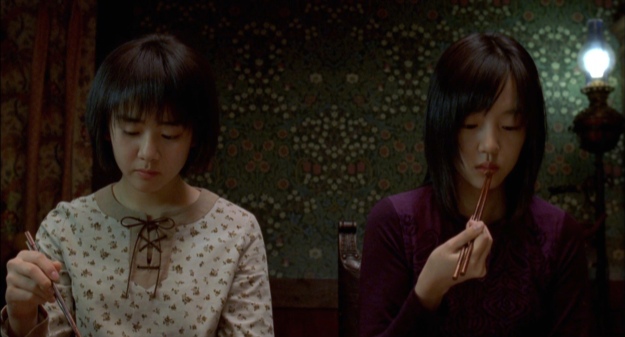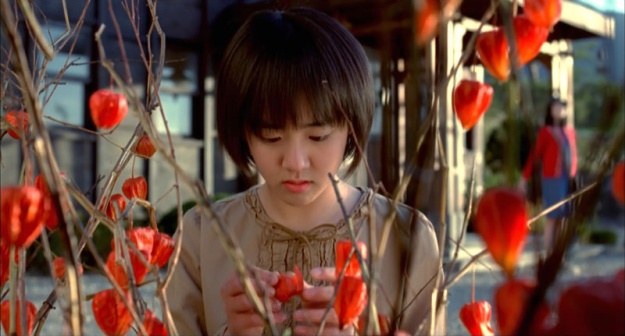It’s been over a month since I wrote something about films, and it quite honestly feels so good to write something again.
When I created Fandom’s Final Girl I dreamed of it becoming a self sustaining personal blog, where I would write about movies I love, from horror to all the fandoms I belong to. I created it when I was writing for free at GotchaMovies.com, but then as time passed and I became the head of the site and this blog went to the wayside. When I got home I didn’t want to write – I wanted to relax. I probably had to watch a movie for work. Sometimes I read. Sometimes I went out with friends. But I never blogged.
Well now that I have no site to run, I can get back to Fandom’s Final Girl. I published my favorite horror movies in 2013 to this blog, and to be honest while that sounds like a good idea again, horror in 2015 has been a monumental disappointment. In fact, where a horror movie usually lands in my top 10 of the year, this year there wasn’t a single horror movie I found worthy (of course, I had Spring in my top 10 last year, so that sort of disqualifies it for this year). I also saw It Follows last year, and upon re-watching it, I find myself in the minority who finds the movie to be very good, but not quite the best. There were so many lackluster horror movies of this year: The Visit, Insidious Ch. 3, the Poltergeist reboot, Sinister 2, Crimson Peak, The Lazarus Effect, and The Final Girls. Krampus was fun, but not quite Trick ‘r Treat standards. The Gift, We Are Still Here, and What We Do in the Shadows were probably the biggest highlights of the year, but I refuse to make a “Best of” list where I’d have to add movies I don’t feel strongly about.
So horror top ten – out.
That being said, this year I have a lot of strong feelings about my general top 10. It’s beautiful and refined, and while there are still movies I would have loved to have seen before making this list (Creed, Macbeth, Breathe, Slow West, Tom at the Farm, and Chi-Raq to name a few), I still want to acknowledge the films that are on my current top 10. The others (if I love them enough) will have to just deal with a mention on a Letterboxd list.
10. Ex Machina
One of Domnhall Gleeson’s step towards taking the year by storm (he was also in Brooklyn, The Revenant, and Star Wars) began with Alex Garland’s Ex Machina, a high concept sci-fi film about a man who wins a week at a rich internet entrepreneur’s home in the middle of the wilderness of Europe. While Gleeson is certainly great in the film, the real winners were Oscar Isaac and Alicia Vikander, both who were able to play characters that were so well rounded and thought out. Isaac played the foil to Gleeson’s Caleb, using Caleb’s vulnerabilities against him to manipulate him into falling in love with a sexy-looking robot disguised as a female. It’s dark, smart, and one heck of a directorial debut. The film personally danced around my top 10 all year, trading places with a number of films before it landed at 10, which I feel is the perfect spot for it.
9. Girlhood
I had a sneaking suspicion since January that Girlhood would show up on my “Best of” list, and after watching it recently I found out I was not wrong. Not to be confused with Boyhood (which is still magical), Girlhood is a French film about a teenager nicknamed Vic who joins a gang after she discovers she has once again failed to meet the grade requirements to move onto high school. The movie follows her as she gains self confidence in her youth, but then when her job leads her to unsavory things she begins to regret. Girlhood is an astonishingly powerful movie about what it is to be a young woman, one without remarkable prospects. The moment the movie won me over was the scene where the group of four girls belt Rihanna’s “Diamonds” in a hotel room, dancing only with each other in glamorous clubbing garments. Je t’aime Girlhood.
8. 45 Years
It’s hard to imagine being with one person for a long term relationship when you’re young, let alone one that lasts 45 years. Andrew Haigh’s succinct drama follows a woman, Kate, played by the amazing Charlotte Rampling, who discovers on the brink of her 45th wedding anniversary that her husband had previously been engaged to a girl from his past who died during a hiking accident in Switzerland. The film explores jealousy, the thoughts that go through Kate’s mind of what might have been had Geoff Mercer’s ex-fiancee Katya lived. After spending a great deal of time with someone, it’s difficult to come to terms with thinking you might have been second best, and 45 Years explores that in such a cold, delicate way.
7. Sicario
Sicario was a film I had no idea I would love so much. Denis Villeneuve’s Prisoners left me so cold that I wound up skipping Enemy last year, but because I have an undying adoration for Emily Blunt I decided to give him another go. Sicario is so brilliant that I might have to give Enemy the shot it deserves. The film is dripping with commentary about females in the workforce, and as Britt Hayes so wonderfully put in her article on Birth.Movies.Death, it’s a striking metaphor for rape. Blunt’s character is never physically raped in the film, but Villeneuve’s drama is about the brutal violation of Blunt’s character, Kate Macer, in a male-driven environment. In the end she’s used not for her brains or ambitions, but for her position. It’s kinetic, and at times rough to watch, but it’s wonderful that a film of the stature was a wide release.
6. Room
Lenny Abrahamson’s Room is one of the best adapted films ever (in my humble opinion). Hitting every important note Emma Donoghue’s book caressed, Room is a tragic tale about how the bond between a mother and her son saved her life. Brie Larson is quite wonderful as Ma, but the real takeaway from this film is Jacob Tremblay, who is the pure and tragic lead in the film (regardless of what awards season would like you to believe). What could have been a dark tale of tragedy turns into one of hope and warmth through Abrahamson and Donoghue’s unique vision, and is certainly has cemented the director as one to keep up with. He’s brave, and his film has a subtle beauty that’s impossible to deny.
5. When Marnie Was There
Studio Ghibli’s last film (as of right now) was a beautiful note to leave on. Hiromasa Yonebayashi’s mature follow-up to the lackluster Secret World of Arrietty has a refined beauty to it that lets it easily fall into the Ghibli canon. A movie about a young girl trying to discover her past and what life holds for her in the future, When Marnie Was There is not only the best animated film of the year, but also probably the most under-seen (sadly). Perhaps my undying love for it comes from the fact that this very well might be Studio Ghibli’s final work of art, but there’s something so casually charming and elegant about Yonebayashi’s film that’s truly captivating. There’s a simple elegance to it that’s hard to come by.
4. Carol
Carol is a film that I walked out loving, and then as the weeks went by I was smitten. Sure, Todd Haynes’ 50s set lesbian drama is as cold as they come, but there’s a magnetic pulse throughout Carol that lingers long after the credits roll. The film is also perfectly cast, with Cate Blanchett and Rooney Mara both exquisitely charming on screen together. However, the highlight of Carol is its subject matter. It’s a movie about the interests and desires of women, where men become secondary characters that only serve as appendages to the overarching story. It’s brilliant. I never expected to fall in love with Carol the way I did, but I have to say I’m thoroughly not disappointed.
3. Son of Saul
Here was a surprise – going into Son of Saul at Fantastic Fest, I only knew it had some good word of mouth coming out of Cannes. At the time, that didn’t mean a whole lot (but apparently this year things changes with my alliance to the prestigious film festival, seeing at 3 movie in my top 5 debuted there). Holocaust movies are one in a million – it feels like there are thousands of these films running around and a lot of them more or less feel the same. Son of Saul is brilliantly different. The film follows a man who is forced to burn to corpses of his people, and one day upon finding the corpse of a young boy he loses it. Taking in the boy as his son, he desperately tries to find a rabbi who can give the child a proper burial. Shot in a range of medium to close ups, Laszlo Nemes brilliantly creates a debut film only others could ever dream of. One of the most intimate and heart-shattering holocaust dramas I’ve ever seen, after crying through this movie I knew it was one of this year’s best.
2. Phoenix
I was genuinely surprised to love Son of Saul as much as I did, especially since the post-Holocaust drama Phoenix had already claimed my heart not two months before. Nina Hoss plays Nelly Lenz, a former concentration camp prisoner who has to undergo facial reconstruction surgery after her stint in the camps. With her face not looking quite the same as it did before, she goes hunting for her husband, who works at an Americanized bar in Berlin. Coming in at a very lean 98 minutes, Phoenix is yet another heart-wrenching film set in Germany’s darkest hour. Petzold has a firm grasp on postwar themes, but what makes Phoenix so rich, so divine is its understanding of womanhood. There’s a beautiful part in the film where Lenz’s husband laments about how his wife was always trying to look like a certain starlet, but at the very beginning of the film we see Lenz lament over the loss of her original face, and while her new one looks strikingly like herself, there’s still something not quite right about it. It’s a smart, additional layer to the movie that very much captivated my attention, and easily made it a close second to my favorite film at the end of the year.
1. The Assassin
I watched Hsiao-Hsien Hou’s The Assassin in the morning at 8am, and even exhausted I still found his most recent feature to be a masterpiece. The film’s mise-en-scene alone is captivating enough, with every frame delicately and thoroughly thought out as if every take is a painting in Hou’s square frame. But the story is also brilliant, a slow and methodical martial arts tale about a woman who was abducted and trained to kill corrupt officials in periodic China. Qi Shu is remarkable as the subtle Nie Yinniang, whose personal conflicts interfere with her designated work. What makes The Assassin one of my favorite films of the year it how it bends storytelling by utilizing breathtaking visuals to progress its plot. This is what film is all about – not fancy dialogue or quick, stylish cuts, but carefully thought out pictures that tell a story. It’s a movie that reminded me why I love film to begin with, and it’s one that’s struck me hard since I walked out of that theater at 10am totally enamored.



































